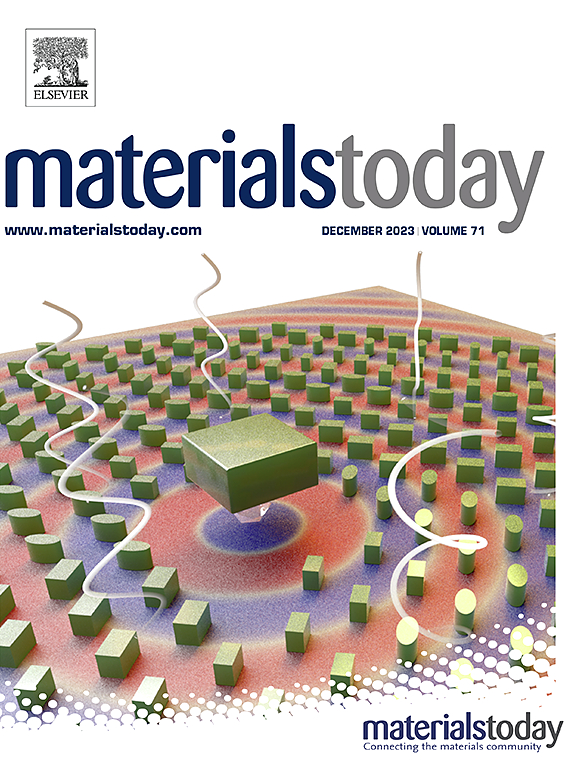具有药物输送和生理传感能力的可编程磁水凝胶机器人
IF 21.1
1区 材料科学
Q1 MATERIALS SCIENCE, MULTIDISCIPLINARY
引用次数: 0
摘要
磁性水凝胶是一种很有前途的磁性软机器人材料,应用于机器人系统和植入式装置。然而,对磁性水凝胶机器人(mhr)的几何形状和磁化曲线进行编程,以及将功能模块集成到机器人系统中,仍然具有挑战性。在这里,我们报告了一种具有可编程磁化曲线和几何形状的mhr组装策略,该策略由磁化水凝胶和基于共价交联的图案弹性体膜的离散集成构建而成。由此产生的机器人在不同的磁场下表现出复杂的变形,能够有效地携带和输送固体药物。此外,所提出的制备方法保留了水凝胶的高多孔性和亲水的微观结构,结合磁性能促进液体药物的装载、粘附和运输。此外,还实现了将超薄和多功能微电子元件集成到mhr中进行生理传感和模拟,这对其内在力学和变形能力的影响可以忽略不计。这些磁性材料和制造方法的引入可以为先进生物医学工具和机器人系统的发展提供新的见解。本文章由计算机程序翻译,如有差异,请以英文原文为准。

Programmable magnetic hydrogel robots with drug delivery and physiological sensing capabilities
Magnetic hydrogels are promising materials for the construction of magnetic soft robots applied in robotic systems and implantable devices. However, programming geometric shapes and magnetization profiles of magnetic hydrogel robots (MHRs), as well as integrating functional modules into robotic systems, remain challenging. Here, we report an assembly strategy for MHRs with programmable magnetization profiles and geometries, constructed from discrete integration of magnetized hydrogels and a patterned elastomer membrane based on covalent crosslinking. The resulting robots exhibit sophisticated deformations under varying magnetic fields, enabling effective carrying and delivery of solid drugs. Moreover, the proposed fabrication method preserves the highly porous and hydrophilic microstructures of the hydrogels, facilitating loading, adhesion, and transport of liquid drugs in combination with magnetic properties. Besides, integrating ultrathin and multifunctional microfabricated electronics into the MHRs is also achieved for physiological sensing and simulation, which has negligible effects on their intrinsic mechanics and deformability. The introduction of these magnetic materials and fabrication methods can shed new insights for the development of advanced biomedical tools and robotic systems.
求助全文
通过发布文献求助,成功后即可免费获取论文全文。
去求助
来源期刊

Materials Today
工程技术-材料科学:综合
CiteScore
36.30
自引率
1.20%
发文量
237
审稿时长
23 days
期刊介绍:
Materials Today is the leading journal in the Materials Today family, focusing on the latest and most impactful work in the materials science community. With a reputation for excellence in news and reviews, the journal has now expanded its coverage to include original research and aims to be at the forefront of the field.
We welcome comprehensive articles, short communications, and review articles from established leaders in the rapidly evolving fields of materials science and related disciplines. We strive to provide authors with rigorous peer review, fast publication, and maximum exposure for their work. While we only accept the most significant manuscripts, our speedy evaluation process ensures that there are no unnecessary publication delays.
 求助内容:
求助内容: 应助结果提醒方式:
应助结果提醒方式:


